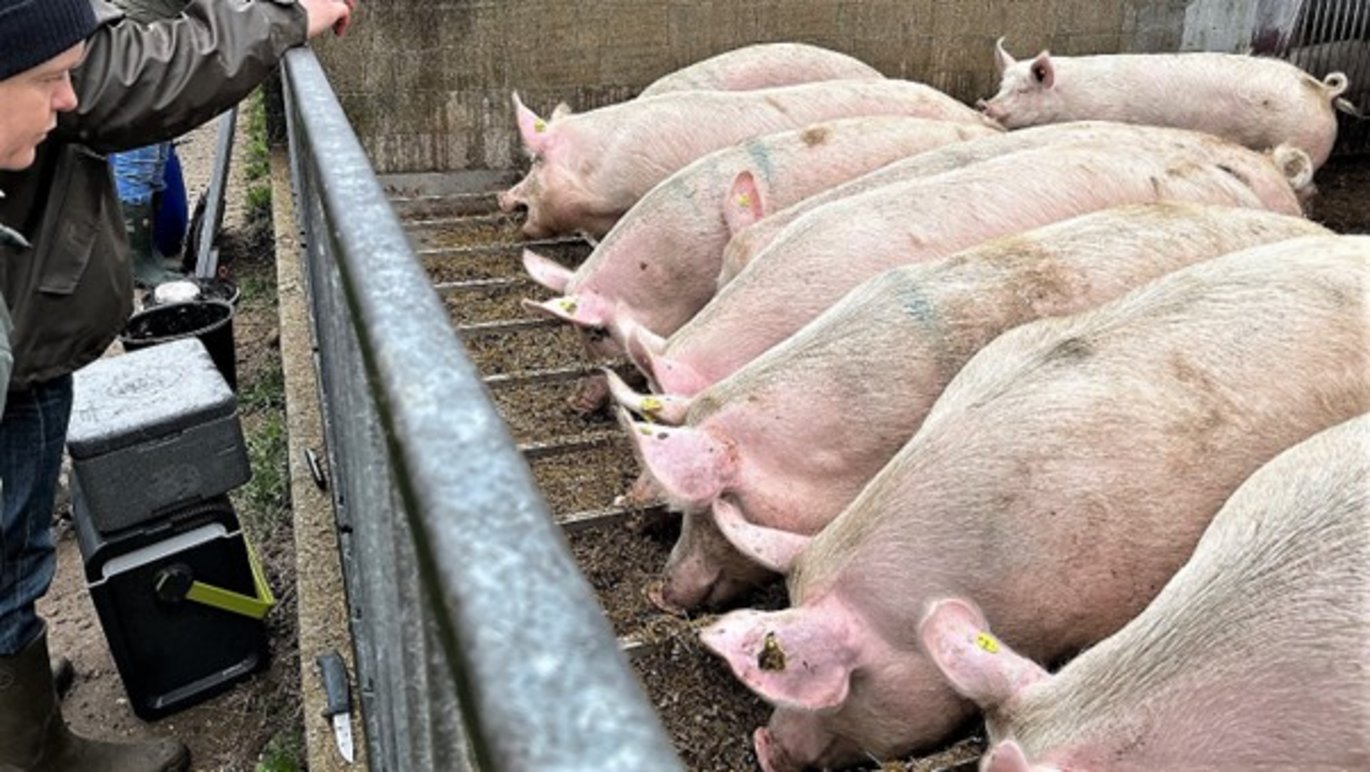Pregnant sows are testing willow silage
The initial experiences in the Organic RDD project OUTFIT indicate that pregnant sows eagerly consume willow silage and seem to prefer willow silage in its pure form - over willow mixed with clover grass.

Free-range sows and trees are a valuable combination that several organic producers have embraced. The trees provide shade for the animals during the summer, positively contribute to biodiversity and carbon storage, and can help retain nitrogen. But perhaps the trees can also contribute in new ways and thus increase their value. The 'OUTFIT' project is investigating whether it is possible to ensile green willow and poplar biomass, which can benefit the farm's feed supply and, in turn, the producers' economy.
Roughage is an important part of the organic sows' feed ration, and previous experiments show that roughage can replace a significant portion of the protein in feed mixtures for pregnant sows. Traditionally, producers use grass silage and whole grains in the winter, but perhaps silage of willow and possibly also poplar can serve as a valuable supplement.
Willow and poplar silage has been successfully produced in the project on a smaller scale in close collaboration between the Danish Technological Institute and Ny Vraa, who have significant expertise in the production and harvesting of poplar and especially willow. Analysis of the silage suggests a successful ensiling process, and particularly willow silage has a relatively high raw protein content; up to 18 percent of dry matter at harvest in June.
However, the energy content is slightly lower compared to clover grass. Future analyses will determine whether the amino acid profile is favorable. Ultimately, the potential for utilization depends primarily on whether the sows consider the silage as an attractive feed. Therefore, it was with great anticipation that the project pilot-tested willow silage in early spring at Bertel Hestbjerg, who is an organic pig producer and project participant.
Two groups of sows were assigned either pure willow silage with the addition of formic acid or co-ensiled with clover grass. Both groups consumed the silage, but there was a clear preference for the silage in the group of sows that received pure willow silage. It even appeared that the sows preferred willow silage over carrots. Overall, both types of silage had good durability.
The project compares two different times of harvest for willow - in June and September. The results show significant differences in yield as well as in the content of dry matter and raw protein. Harvesting willow in June resulted in a yield of 1.3 tons of dry matter per hectare compared to 8.0 tons of dry matter per hectare when harvested in September. However, the raw protein content was 17.5% in June, which was more than double compared to the September harvest.
Harvesting willow or poplar during the growing season benefits the environment because nitrogen is removed from the field through the harvested biomass. Again, there is a significant effect of the harvest time: Harvesting willow in September led to the removal of 108 kg of nitrogen per hectare, compared to 37 kg of nitrogen per hectare when harvested in June.
The results clearly highlight the need to further explore the effect of harvest timing. Future research and development should investigate possibilities for achieving relatively high yields, removing substantial amounts of nitrogen without compromising the nutritional quality of the silage. The regrowth of trees after harvest during the growing season is also an important factor.
In contrast to many other European countries, Denmark has managed to preserve outdoor sow herds as a central element in organic farming in line with organic principles and consumer expectations. It is, therefore, an important hallmark of Danish organic food production, while also being an efficient livestock production with low antibiotic usage. This is precisely why it is essential to continually developing a production in an even more sustainable direction - a goal that the OUTFIT project contributes to in close collaboration with organic pig producers.
The project is a part of the Organic RDD-6 Programme, coordinated by ICROFS. It has received funding from the Green Development and Demonstration Program (GUDP) under the Ministry of Food, Agriculture and Fisheries, Denmark. Project partners include AU-AGRO, AU-FOOD, AU-ANIS, Innovation Center for Organic Agriculture, Danish Technological Institute, Center for Free Range Livestock, Ny Vraa, Risbjerg Agriculture, and Hestbjerg Økologi.